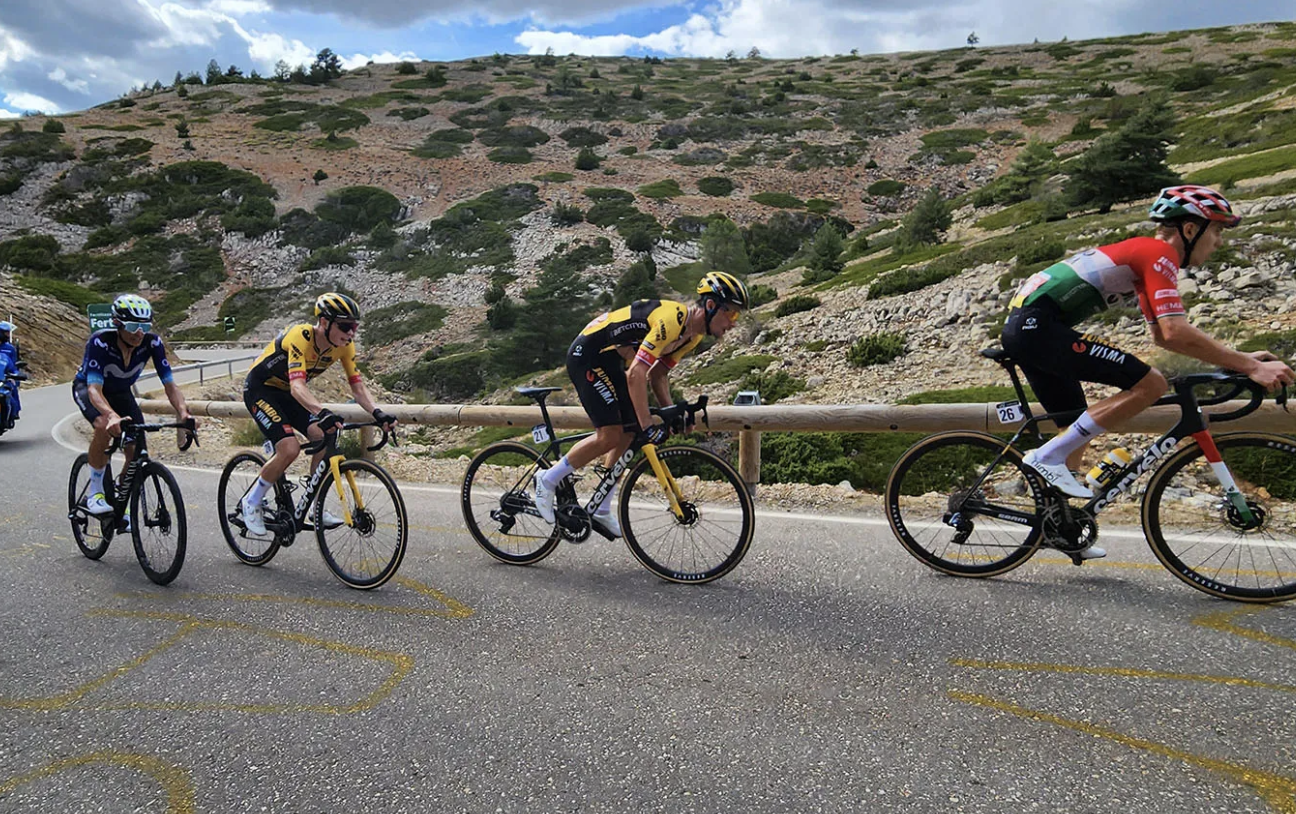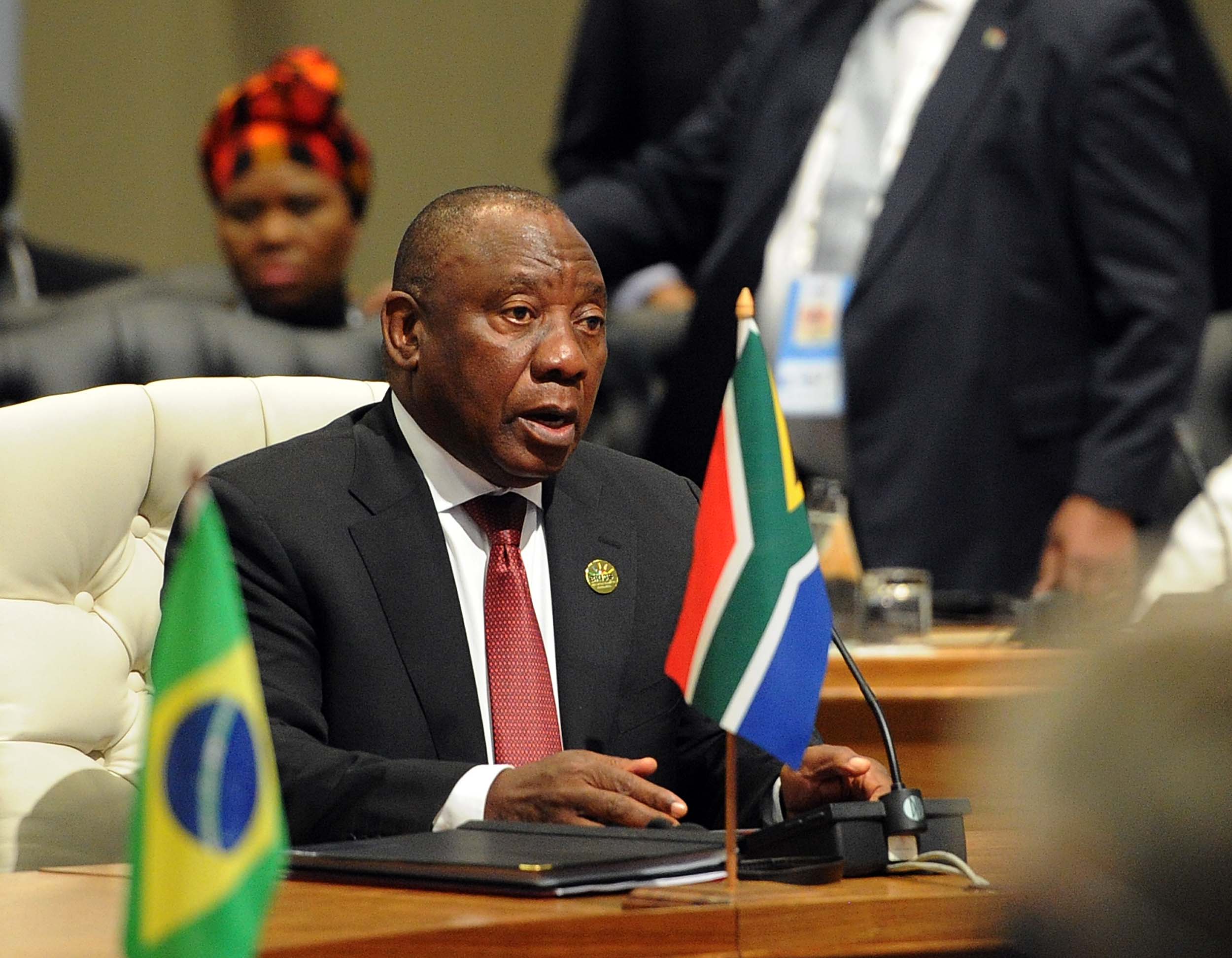News
The Vuelta a España — a Grand Tour that Focuses the Global Spotlight on Spain
The Vuelta a España is a great way to brand and market a country. The multicoloured snake of the peloton returns the investment made by regions, towns and cities many times over, particularly those off the beaten economic track.

'I wish I could do a wheelie,” puffed Australia’s Callum Scotson, a pro cyclist from Jayco, 800m from the finish of Stage Nine of the Vuelta a España. The route concluded up the Collado de la Caravaca de la Cruz, an 8km, 500m climb at the end of a gruelling 180km stage.
Scotson’s breathless reply was at the urging of one of the spectators to “pull a wheelie”. Earlier Primož Roglič, a three-time winner of the Vuelta, and one of the favourites for this year’s event, gesticulated to the crowd to raise the level of cheering.
The Vuelta is, along with the Tour de France and the Giro de Italia, considered one of the Grand Tours, a pinnacle for any cyclist. First held in 1935 and every year since 1955, the Vuelta is run over 21 daily stages (with two rest days) in an annually changing route.
Broadcast live across 190 countries by global networks, the Vuelta is covered by more than 1,100 journalists and watched by more than 100 million over three weeks on television and live-stream audiences worldwide, including 18 live broadcasts. This viewership has increased markedly from 2018, for example, when an average of 1.6 million viewed the racing each day.
It’s a great way to brand and market a country. The multicoloured snake of the peloton returns the investment made by regions, towns and cities many times over, particularly those off the beaten economic track. As such, the Vuelta is a great way to discover authentic Spain.
And the fans come out in force. The aficionados stagger up extraordinary climbs, lining some of the most famous routes, ringing little bells, wearing Elvis suits and Spanish flags, and spraypaint and chalk encouraging messages on the tarmac exhorting great things from their heroes and, of course, drink vast amounts of rioja and other brews.
The event is held in good and loud cheer, despite (perhaps because of) the throngs of fierce-looking Guardia Nacional, some toting assault rifles, many in cars with wailing sirens and flashing lights, most in flak jackets and all looking the unshaven part.
Two Africans are racing in this year’s Vuelta, which concludes on 17 September: Amanuel Ghebreigzabhier (29) of Eritrea and Ethiopia’s Welay Hagos Berhe, just 21. Ghebreigzabhier finished fourth on the Caravaca de la Cruz stage, his best finish yet in seven Grand Tours. Last year, South Africa’s Louis Meintjes managed a dominant win on the Les Praeres which tops out at a 23% gradient.
“It has an end-of-year feeling about it, the Vuelta,” says Daryl Impey, the only South African to wear the yellow jersey on the Tour de France. “It’s more relaxed than the Giro and especially the Tour”.
‘No one gives an inch’
This is unusual in a professional sport known to be one of the toughest (and sometimes the roughest) of all. “There are few friends in the peloton,” notes Impey at the end of a 16-year pro career, 13 of which has seen him based in Spain. “It’s a hard business, where no one gives an inch, and where it is unusual if you are more than just a number to your team.”
What makes cycling in Spain special is not just the crowds and enthusiasm, or even witnessing the incredible logistics on each stage involving no less than 2,500 Vuelta employees. It’s cycling in Spain itself, where dedicated cycle routes are the norm, and where the vias verdes (green roads) provide a rural zig-zagging cycling network, built mostly on former narrow-gauge railway tracks, enabling stays at agro turismo (or casa rural) homestays, Airbnbs, and a variety of cheerful and (even for a South African) cheap hotels in the smaller towns.
In offering access to authentic Spain, it traverses stunning topography, plunging up and down dense forests and sandy, barren mountaintops, running along the Mediterranean beaches, and coping with the searing climates of the south and the cooler, wetter north.
Could South Africa today stage a multistage road race along the lines of the Rapport Tour which ran from 1973 until 2000? After all, the Cape Epic has rightly obtained global fame, while the 947 and Cape Town Cycle Tour have likewise achieved international status and following.

Nic White is a former pro who runs training groups from his base in Cape Town. “While we have run excellent road races in the past, to run a tour you need an organisation behind it which can attract sponsors,” he notes. “I think we missed the boat. Guys tried. But now, likely these events are too expensive to run, and our roads are also falling apart.”
Each stage of the Vuelta is lined with more than 8km of advertising barriers, with seven major sponsors. More than 900 police cars and motorbikes, medical vehicles and logistics vans and trucks move between stages, and 400 tonnes of banners, finishing lines, and the all-important podium have to be shuttled between stages.
A reason for the number of cyclists in Spain — and consequently, the number of outstanding pros, like Miguel Induráin (who won five Tours and two Giros), Alberto Contador (two Tours, two Giros and three Vueltas) and the recently-retired Alejandro Valverde (who won the Vuelta in 2009 along with stages on the Tour and Giro) — is because of the Vuelta, or course, and because the sport is safe. As one measure, there are 28 Spaniards and 30 Frenchmen in the 2023 event among the 176 entrants from 22 teams.
Salva Galves (67) runs a small cycle shop in the centre of Barcelona. Prompted, he proudly explains the fading numbers and black and white photos of his younger self on a pinboard, the winner of the Spanish national championship in 1978, a member of the track team at the World Championships in 1977, and once a participant in the Vuelta in 1980. “But,” he laughs, “I finished at the back. You see, I was a sprinter, not an escalador”.
The Vuelta offers an insight into Spain away from the wide boulevards and elaborate baroque facades of Madrid and the quirky architecture and nascent nationalism of Barcelona to the rawer yet endearing version of a poorer, agricultural economy. The common thread linking these worlds is a deep-seated hospitality and simpatico, empathy for the visitor. And in this, the Vuelta is the tyre that binds.
This article originally appeared on the Daily Maverick
Photo: Greg Mills


